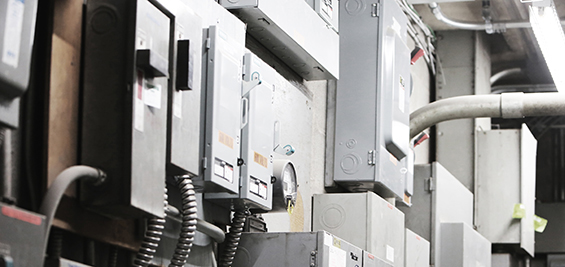Learning the correct inverter protection knowledge, can not only greatly increase the service life of inverter, and can reduce production cost, improve production efficiency. The production common sense introduced in this paper is ignored by us during the production process, but it is very important.If we master the basic knowledge of protection, and have applied it to the practical production, the life of inverter can be increased more than 2 years.
We often encounter below problems when using inverter:
(1).When restarting, tripping is incurred immediately while speedup.
(2).Tripping is incurred as soon as power is on. This phenomenon generally cannot reset.
(3) .When restarting, it doesn’t trip immediately instead of during the acceleration.
Above problems are usual feedback from users. Of course, there are some other problems too. We will not list all of them one by one(welcome friends who have other problems, you can send your questions to us by Email: sales@kwoco-plc.com. We will discuss them with you together). In addition to the problem of inverter itself, a lot of problems are incurred because we don’t pay attention to inverter protection in the process of use. If you don’t have the above problems, and use it according to the following methods for protection, it can also reduce the failure rate of the inverter.
In fact, the operation is very simple, as long as you master the following points:
(a).Waterproof and dewing: if Mitsubishi inverter is on the scene, we need to pay attention whether there is pipe or other leaks above it. No splash of water near the Mitsubishi inverter. In conclusion, the protection grade of cabinet on the scene should be above IP43. When necessary, desiccant and heater must be added in the cabinet.
(b).Waterproof and dewing: if Mitsubishi inverter is on the scene, we need to pay attention whether there is pipe or other leaks above it. No splash of water near the Mitsubishi inverter. In conclusion, the protection grade of cabinet on the scene should be above IP43. When necessary, desiccant and heater must be added in the cabinet.
(c).Anti-corrosive gas: if the concentration of corrosive gas is large at the operational environment, it will not only corrupt lead wire of components, printed circuit boards, etc., but also accelerate the ageing of plastic parts and reduce the insulation performance. In this case, control cabinet should be made by closed structure, and ventilated.
(d).Temperature. Inside of inverter is high-power electronic components, which is easily influenced by working temperature. General requirements of product are 0 ~ 55 ℃, but in order to ensure the safety and reliability at work, we should consider to leave room. The best is to control the temperature under 40 ℃. In the control cabinet, inverter is generally installed in the upper part of the cabinet, and we should strictly comply with the installation requirements in product specifications. Heating elements or easy heating elements are absolutely not allowed to be installed close to the bottom of the inverter.
(e).Vibration and impact. When control cabinet equipped with inverter is hit by mechanical vibration and impact, it will cause poor electric contact. At this time except to improve the mechanical strength of control cabinet and stay away from the sources of vibration and impact, we still should use anti-seismic rubber mat to fix the components outside the control cabinet such as internal electromagnetic switch which cause vibration. After the equipment is running for some time, the inspection and maintenance should be carried out.
(f).Prevent electromagnetic interference. Electric welding machine, power machinery
(g).Avoid direct sunlight
(h).Away from the corrosive liquid and gas
( Among them, overheating is the most common fault: once customer complained that FR – D740-1.5K inverter tripped “OH” after operating for half an hour. The machine couldn’t work normally, which brought a lot of trouble to their production. Customer spent a lot of time to check the machine, but didn’t find any problem. Finally, our engineers analyzed problems and repaired it: it was broken only after running for a period of time, so it was unlikely that the temperature sensors were broken. The temperature of the inverter might be too high. Fan ventilator turned slowly when power was on. Shield inside was full of a lot of cotton batting (because this inverter is used in the textile industry). After cleaning, our engineers restarted it, and fan ventilator was in good operation. This fault didn’t happen again after running a few hours.)
So check whether you have done the above points on your inverter protection, it can not only greatly increase the service life of your inverter, but also avoid you taking many manual power, material resources to solve the problems that could have been avoided.
